A GOOD TEACHER CAN
CHANGE EVERYTHING
A GOOD TEACHER CAN
CHANGE EVERYTHING
BY NANCY ALEXANDER
A GOOD TEACHER CAN
CHANGE EVERYTHING
BY NANCY ALEXANDER
Liz Flaherty, associate professor of wildlife ecology and habitat management, was at a farmers market in West Lafayette a few years ago, buying the last quart of blueberries from a farm stand. She doesn’t recall exactly how she and the high school student who sold it to her got on the topic, but Flaherty mentioned picking her own blueberries while in Alaska for fieldwork. The student, Rachel Brummet, asked Flaherty what she did.
“And when I told her I was a wildlife biologist, she said, ‘That was the field I was considering,’” Flaherty recalls. The professor gave Brummet her card and invited her to sit in on a lecture and lab. The student seized the opportunity and liked Flaherty’s hands-on approach to teaching.
Thanks, in part, to blueberries, Brummet is now a senior majoring in wildlife and forestry at Purdue, one among thousands of students whose lives have been shaped by the lecturers, mentors, researchers and Extension specialists who are the College of Agriculture’s teachers.
DIFFERENT ROADS TO SCHOLARSHIP
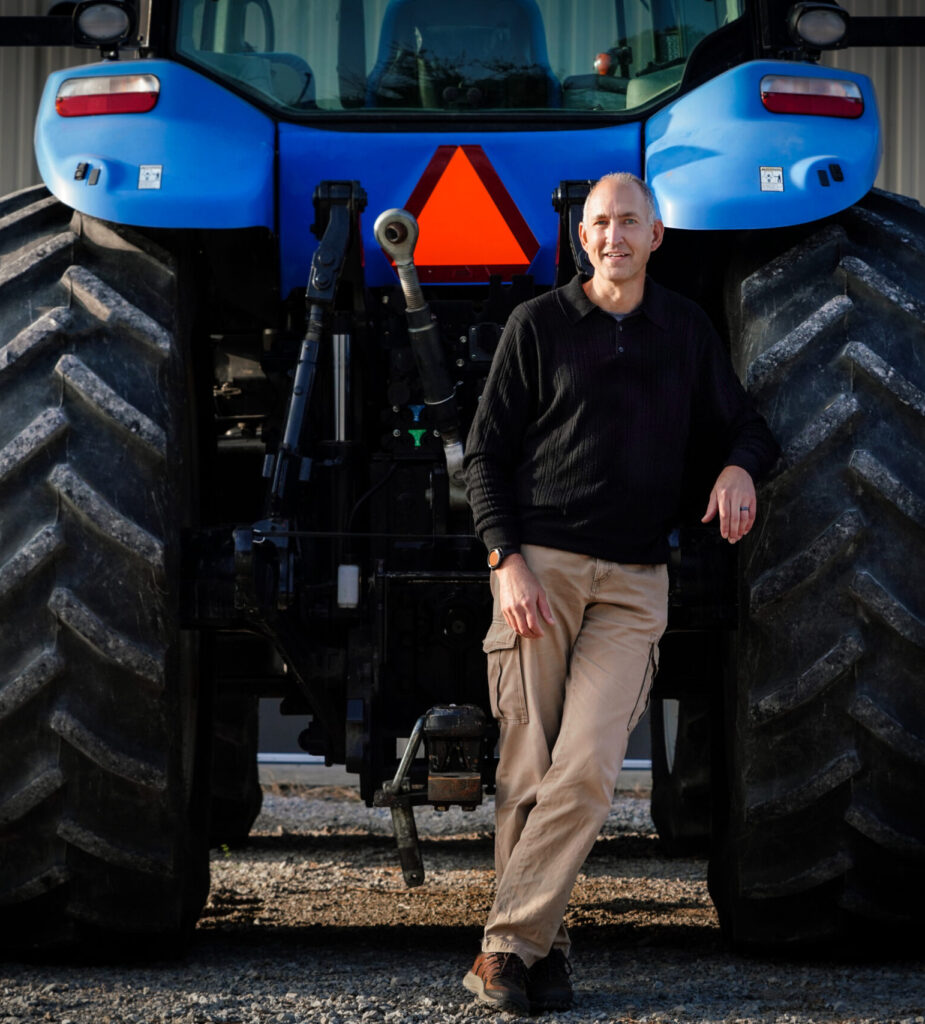 The College of Agriculture equips its graduates to tackle 21st century challenges. At the heart of that effort is good teaching — the well-planned, intentional and pragmatic interaction between faculty and students that occurs in and out of classrooms and labs every day.
The College of Agriculture equips its graduates to tackle 21st century challenges. At the heart of that effort is good teaching — the well-planned, intentional and pragmatic interaction between faculty and students that occurs in and out of classrooms and labs every day.
“The College of Ag has always had a balanced approach to teaching,” says John Lumkes, assistant dean in the Office of Academic Programs.
“Agriculture tends to have a holistic approach to what it means to be a faculty member,” he says, crediting the college’s focus on outreach since its inception as a land-grant university. “We understand there are different ways to show scholarship. Historically — and it continues to be our strength — we value multiple ways to have impact. Working with students is one of the big ones.”
Agriculture faculty members tap professional organizations and networks around the world as well as a wealth of teaching resources on campus. In addition to college-specific training, IMPACT (Instruction Matters: Purdue Academic Course Transformation) helps instructors redesign their courses to create student-centered teaching and learning environments.
Lumkes completed the IMPACT program in fall 2019. “I’m never too old to learn,” says the professor of agricultural and biological engineering, a 23-year teacher (the last 16 at Purdue) and past recipient of the Murphy Award, Purdue’s highest undergraduate teaching honor.
He leads college-level programs to improve teaching effectiveness, encourage innovation and collaboration, and coordinate awards for teaching excellence. “It’s important to recognize good teaching and promote good teachers, and to let our faculty members know there is a path forward to be good teachers,” Lumkes says. The college’s faculty awards program, he adds, “helps the visibility of people doing great work.”
“Having someone with John’s experience, talent and commitment in the assistant dean role is a major demonstration of the college’s commitment to excellence in teaching,” says Christine Wilson, the associate dean and director of academic programs for Purdue Agriculture. “That commitment was evident to me as a young faculty member in agricultural economics early in my career. And it’s certainly a major reason I was drawn to return to Purdue in my current role.”
The faculty members who share their thoughts here have won enough prestigious Purdue and national teaching and mentoring awards to fill these pages without any accompanying narrative, but they all agree: it’s not about the awards. It’s about preparing graduates for a workforce that needs their knowledge, skills and cultural competence to impact the future.
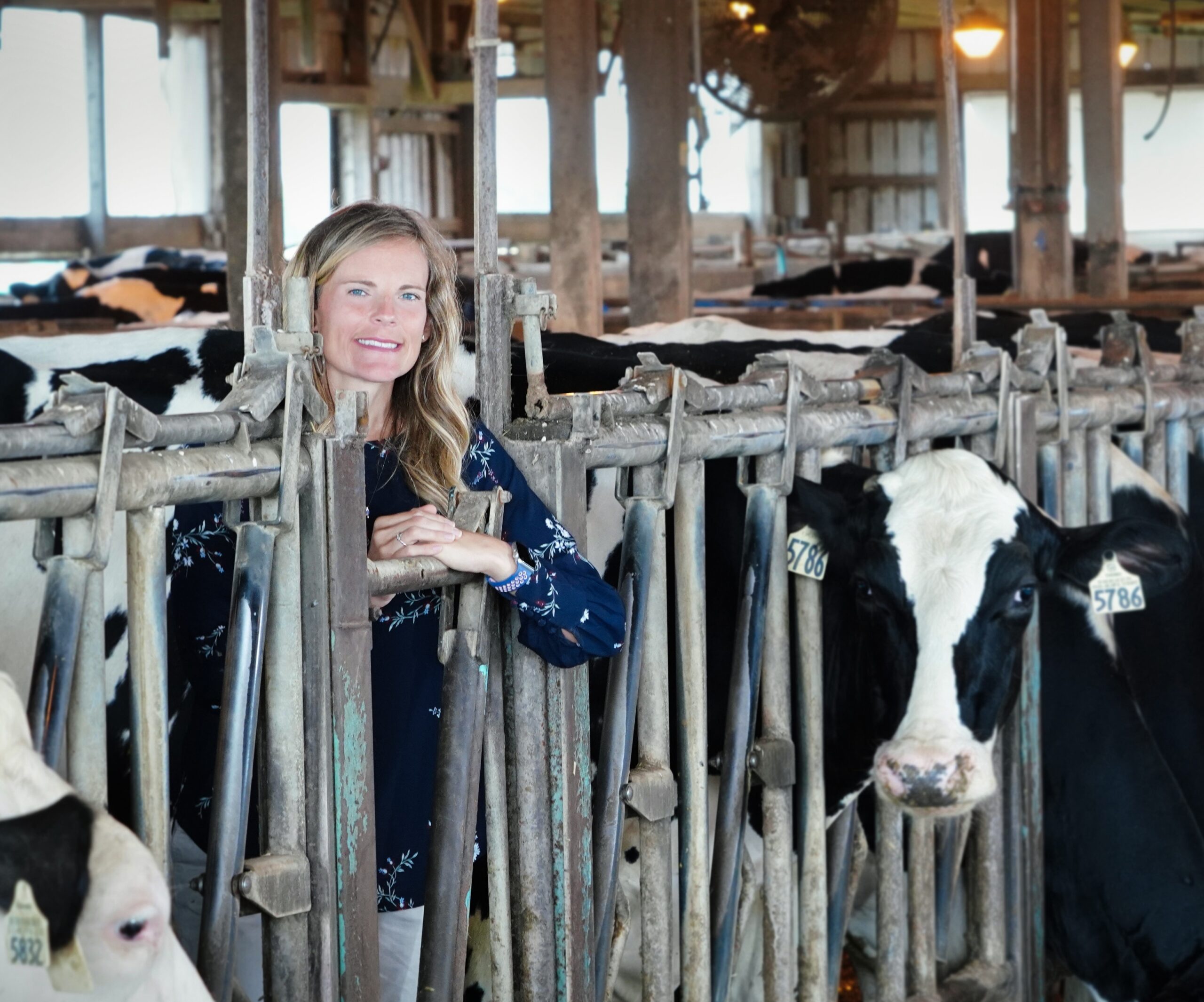

Excellence in teaching isn’t just skillful dissemination of knowledge. It’s the human connection that fosters excellent academic growth. The best motivation is the knowledge that the teacher cares about the student on both an academic and personal level.
— Elizabeth (Liz) Karcher, associate professor of animal sciences

CONNECTED AND CARING
When Liz Karcher teaches Introduction to Animal Agriculture in the fall semester, her goal is to increase awareness and interest among her audience of 180. Most are first-year students, and three-quarters are animal sciences majors. “It’s the first course many of them will take in animal sciences, and I want to make them excited about animal production,” Karcher says.
Purdue reduced in-person class size and increased its use of online meeting technologies in fall 2020 in response to COVID-19, but Karcher’s challenge remains the same: “I use strategies to build community and engage my students,” she says. She routinely divides students into small collaborative groups for team-building exercises, case studies, discussions and laboratory stations. Supplemental weekly labs are hands-on and encourage students to explore the relevancy of the week’s topic. New activities and assignments or changes to the classroom environment are carefully assessed for their impact on student learning.
“I try to find a way to make sure students know that I care about their success in the course and that I want to help them reach their goals,” Karcher says. “Building relationships allows students to explore new concepts and assignments with me throughout the course.”
One-on-one interaction through undergraduate research offers another way to connect with her students, and Karcher often encourages them to attend scientific conferences. She also created and leads two study abroad programs — in Italy and Vietnam — that challenge Purdue students to think about agriculture on a global scale.
For Karcher, these opportunities create relationships that last beyond graduation. “When you get updates from former students and see their successes and journeys, you feel like you’ve made a difference for the student,” she says.
Karcher recalls receiving a year-end note from a quieter member of a student organization she advised: “One of the things the student said was, ‘I love watching how you balance your career with your large family.’ I never realized the impact this has had on numerous students.”
Karcher recently led a three-year review of the animal sciences curriculum, which she says is key to making improvements that benefit students. “Our college is already known for having excellent instructors,” she says. “The college is willing and able to be a leader among colleges of agriculture in the realm of teaching.”
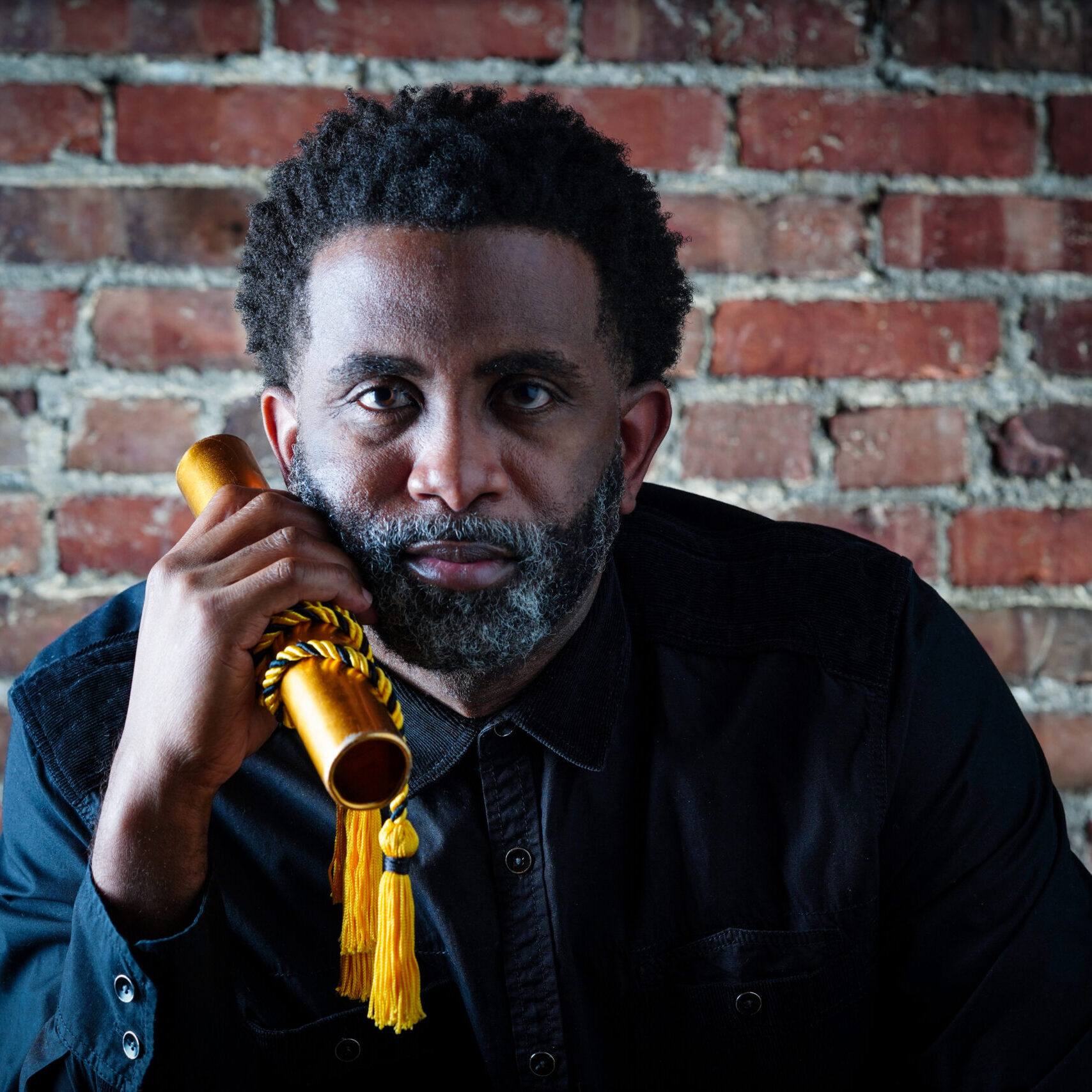

My expectations of excellence apply to everyone, and every student understands the level at which I want them to prepare. But I also try to meet individual needs.
— Levon Esters, professor of agricultural sciences education and communication

HIGH EXPECTATIONS
Levon Esters says he was a product of others’ high expectations as an undergraduate and master’s student at two historically Black colleges and universities (HBCUs). “HBCUs are known for attending to the needs of students of color,” he says, citing smaller classes and “a spirit of understanding of where the students come from.”
Esters’ emphasis on individual expectations also taps his experience in coaching youth sports. “I don’t think you would coach all athletes the same,” he explains. “You need to know what techniques work best with each athlete that will help motivate and build them for success. I would never want it said that I treat everyone the same.”
Esters, who joined the Purdue faculty in 2009, now teaches graduate-level courses of five to 12 students. He believes it’s important to challenge them with content that’s ahead of current trends in higher education.
In weekly meetings with his students, Esters lets down his professorial guard. “I’m just myself,” he says. “I do what I can to show them that they can master what they’re learning. I listen and try to understand where they are if they don’t understand the subject matter. We talk things through. They feel comfortable, but they also understand that I’m not going to compromise my expectations.
“A lot of what I do is mentoring. Mentoring is a form of teaching.”
Esters and his Agricultural Sciences Education and Communication colleague Neil Knobloch co-founded Mentoring@Purdue (M@P) in 2012. The program has grown to welcome students from other colleges at Purdue and has garnered national attention. Designed to strengthen graduate education for women and underrepresented graduate students in the College of Agriculture, M@P fosters mentoring relationships among graduate students and faculty or staff members in the agricultural and life sciences. In addition to its academic and networking benefits, M@P builds community and provides a space that imparts a sense of belonging that students need to be academically successful. Esters and Knobloch are now part of a grant project to expand the M@P model to other institutions.
“It’s clear that good teaching is part of the College of Agriculture’s brand identity,” Esters says. “Because our college is known for good teaching, advising and mentoring, undergraduates want to be here, and instructors will help them master the material and be ready for the workforce.”
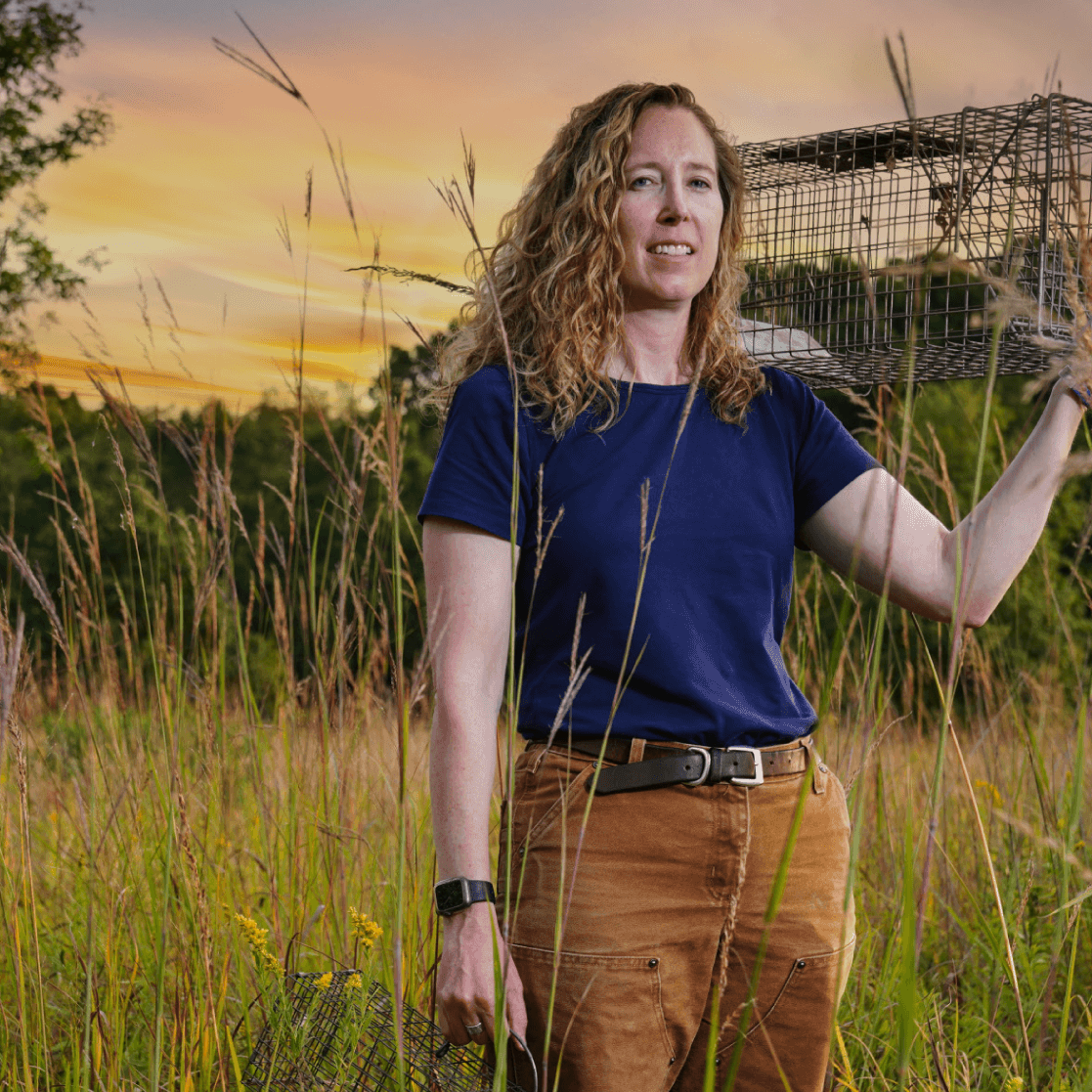

“No matter what challenge I present to students, as long as I provide support, they’re able to do anything.”
— Elizabeth (Liz) Flaherty, associate professor of wildlife ecology and habitat management, Department of Forestry and Natural Resources

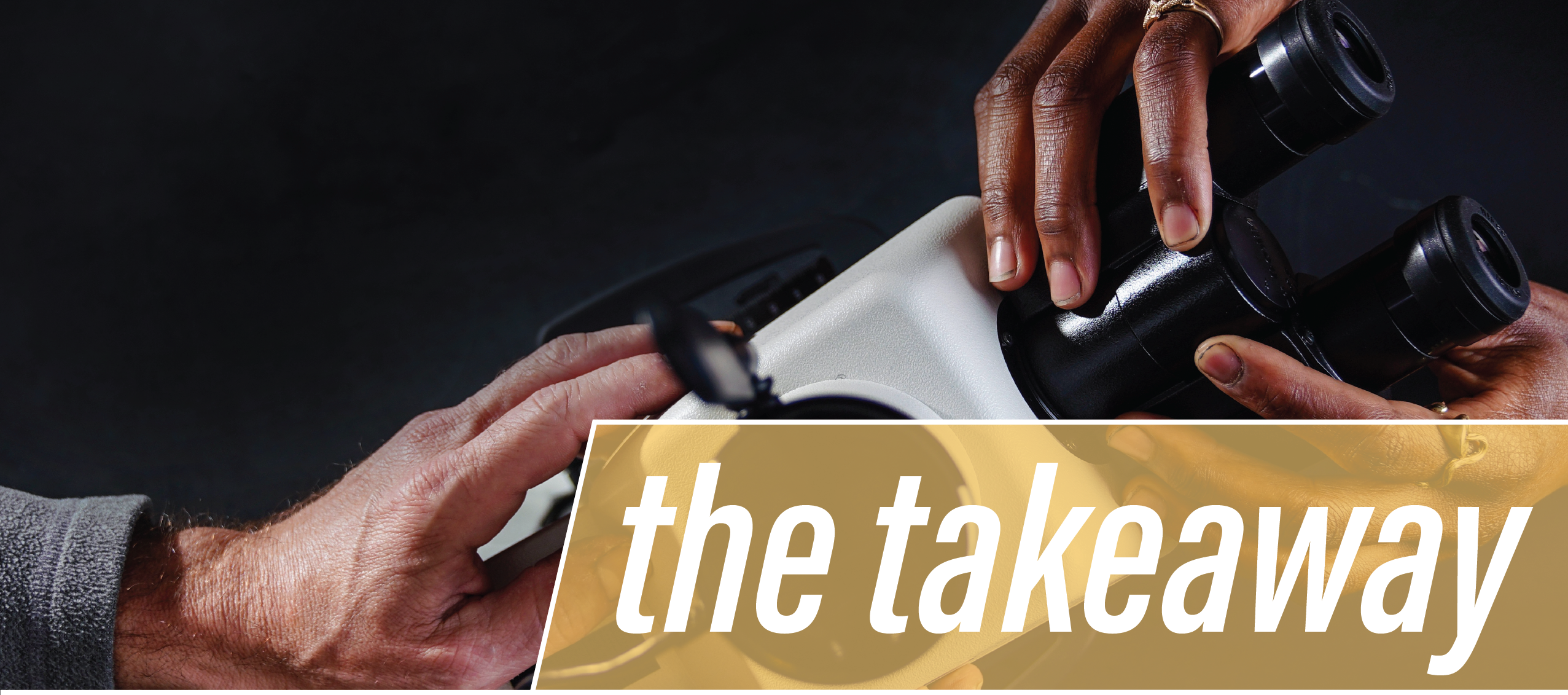
- Purdue Agriculture recognizes and promotes great teachers. The college encourages faculty to tap into a wealth of teaching resources.
- Liz Karcher, associate professor of animal sciences, uses varied techniques to engage students and encourages them to conduct undergraduate research and study abroad.
- Setting high, but individualized, expectations is key for the students he mentors, says Levon Esters, professor of agricultural sciences education and communication (ASEC).
- Esters and his ASEC colleague Neil Knobloch co-founded Mentoring@Purdue to strengthen graduate education for women and underrepresented graduate students.
- Liz Flaherty, associate professor of forestry and natural resources, helps students obtain current skills they need to be successful in the workforce, informed by her research.
- “Learning to do” forms the core of Professor of Agricultural Economics Larry DeBoer’s teaching philosophy. He wants his students to apply knowledge of models, data and historical analysis to contemporary events.
- Orla Hart, clinical assistant professor of biochemistry, teaches students pursuing a wide variety of career paths, but expects each to apply the material they’re learning. Her flexible classroom strategies support students with different strengths.
- Communicating Across Culture, developed by Pamala Morris, assistant dean and director of the Office of Multicultural Programs, is designed to produce more interculturally competent graduates who can work across a wide range of borders, systems and stakeholders in the global marketplace.
STUDENT-CENTERED
Seven years into teaching at Purdue, Liz Flaherty still changes up her courses every year. “Everything I teach, I’m tweaking to improve for the next semester,” she says.
She does so because the professional fields she is preparing her students to enter are dynamic. Flaherty focuses on the skills her students will need for future success and teaches to meet what she sees as important objectives that are informed by her own research.
“A lot of my research is related to how wildlife responds to changes in habitat,” she explains. “So when I’m teaching the habitat management course, I’m not talking about something in an abstract way; I can share stories from my personal experience doing research or working with agencies.
“I also teach them how to do a management plan, which is transferable to a wide variety of careers.”
Flaherty says the College of Agriculture’s emphasis on application and outreach reinforces her work in the classroom and lab. “There are resources to help us be excellent teachers,” she says. “One that I think is fantastic is a grant program for undergraduate research.” Several of her students have published papers as a result.
Flaherty’s favorite course to teach is her “super fun, hands-on” wildlife techniques class in the spring semester. “I have a chance to spend a lot of time with the students,” she says, as they live-trap Eastern cottontail rabbits, conduct habitat surveys, learn to analyze data and write a research manuscript. “It gives them a chance to see on a small scale what a general wildlife biology experience is like,” Flaherty says.
“I place a lot of importance on, and put a lot of time into, teaching them how to communicate,” she adds.
Flaherty is motivated by where her students may take these skills. “We’re training the next generations of professionals in the fields of agriculture and natural resource sciences. That is a daunting task — to know we have that much responsibility. Good teaching means we’re producing future professionals who will be able to be successful and have a huge impact in their careers.”
ENTHUSIASTIC
Larry DeBoer joined the agricultural economics faculty in 1984, but he still carries into the classroom lessons learned in his own undergraduate experience at a small liberal arts school. “We were very much figuring things out through the process of writing and talking,” he says. “I believe in that kind of education.”
But DeBoer, who retired at the end of 2020, regularly taught to a Purdue lecture hall of 400 non-majors enrolled in economics — a combination of large enrollment and a required course. He’s continued to teach that course this spring, and he’s adapted some of his techniques to “create a small-class result in a big class.”
“The show you put on up there has to be big,” he says. DeBoer then supplements his energetic presentation with opportunities for each student to participate. He uses Hotseat, an interactive tool developed at Purdue, which allows students to think and talk about poll questions, see the poll summary, or submit their own questions from a phone, tablet or laptop. Students also work in small groups within the larger class, in group projects (outside of the pandemic semesters) or peer reviewing short essays by their classmates using Circuit, another Purdue tool.
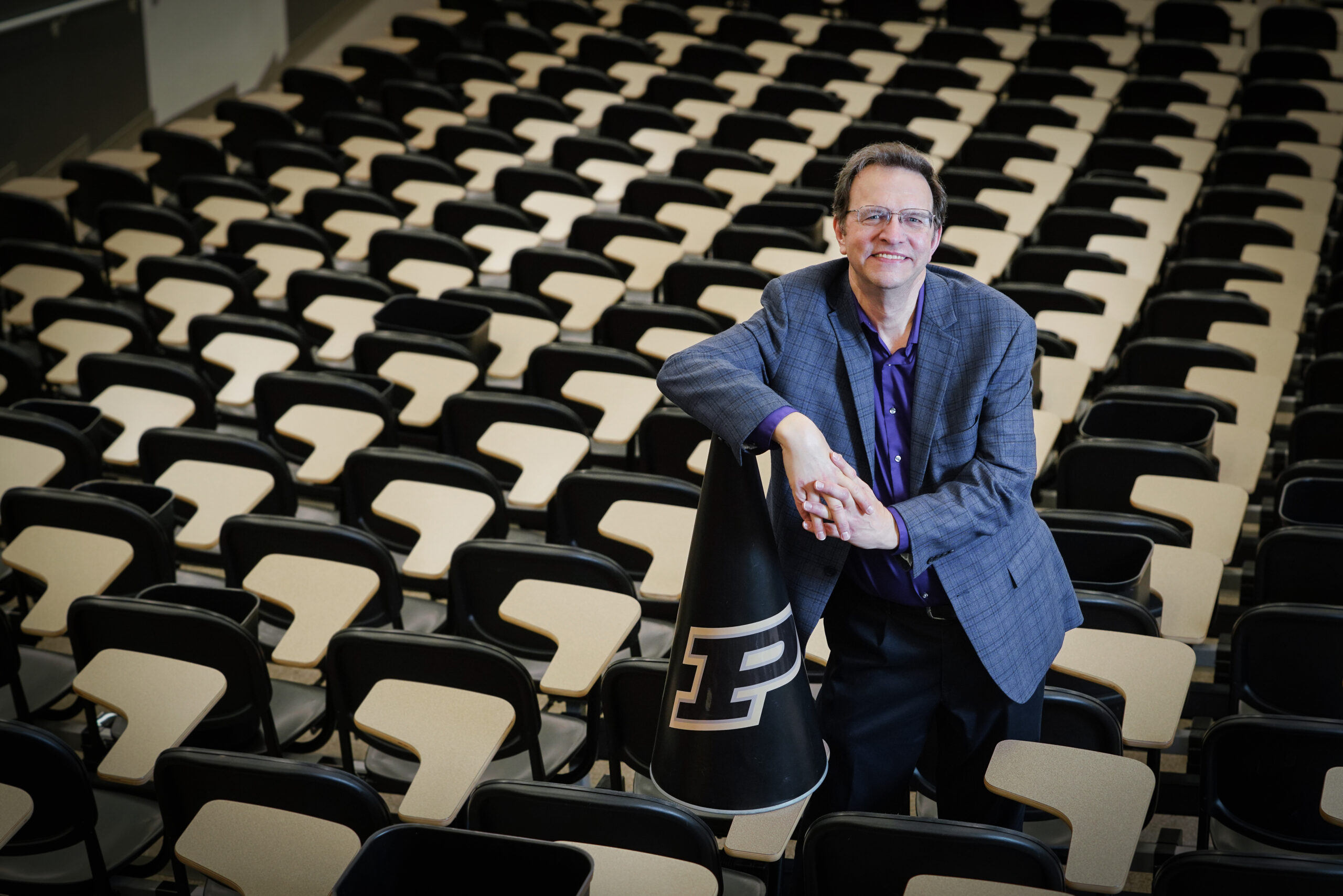

“My lecture style is naturally loud and colorful and enthusiastic beyond anything they’ve ever expected.”
— Larry DeBoer, professor emeritus and retired Extension specialist in agricultural economics

This approach may account for his sometimes-reluctant students beginning their semester-end evaluations with such phrases as “I’m really not interested in economics, but ...” or “I thought it would be boring, but ...” before acknowledging that they did, indeed, absorb the material.
“You don’t have to cover everything,” DeBoer adds. “That’s what the textbook is for.” (He wrote the textbook.) “I want them to be able to take the macroeconomic model that we build in the class and their knowledge of the data, and their experience in applying this to historic examples, and take it out and analyze contemporary events.
“This ‘learning to do’ is the core of what I would consider my teaching philosophy,” he adds. “It’s my task to help students learn to interpret the economic events that will come at them for the rest of their lives.”
DeBoer’s classes benefit from his extensive research and Extension work in state and local government public policy. “We have a core of folks in the College of Agriculture whose job it is to talk to real folks with real concerns, and to give them real answers. That keeps us down to earth. I think we take that into the classroom.”


“Good teaching is about creating an environment that is conducive to learning — and recognizing that this means different things for different people.”
— Orla Hart, clinical assistant professor of biochemistry

FLEXIBLE
For her last lecture before spring break in 2020, Orla Hart discussed how SARS-CoV-2 causes COVID-19 to show her 150 or so students in 300-level biochemistry “they can use what they’re learning in the classroom to help them decipher what’s going on out in the world.”
“A few students decided during that lecture not to go on spring break,” she adds. “I consider that a win.”
Hart joined Purdue as the first teaching-focused faculty member in the Department of Biochemistry in 2013. When faculty and students transitioned from lecture halls and labs to remote learning last spring, “I was in a slightly different situation to my peers because I had created an online section for one of my courses,” she says. “So, in terms of primary content delivery, I had that ready to go. And honestly, I can’t even imagine how much more difficult that would be if I hadn’t done that.”
The transition wasn’t easy for her students, Hart adds. “Not all students are suited to online learning. For some the material is challenging, and being able to look them in the eye to see if they’re understanding it is key to their success.”
She credits her teaching assistants for helping to keep multiple sections of the online lab class on track and was quick to diffuse student stress with movable deadlines and open-resource exams.
Students in the course aspire to careers in biological or life sciences, medicine, nursing, veterinary medicine, animal sciences, dietetics, food science, botany, nutrition and engineering. The bottom line for Hart was that they meet their learning outcomes. “Whether you’re in plant sciences, pre-med or biological engineering, I want to see you be able to apply the material.”
She also considers students with access to high-end technology and those on the wrong side of the digital divide; students whose parents pay for the entirety of their Purdue education and others who work multiple jobs to get by. “Flexibility is more time consuming, but it’s the equitable way to do things given the massive disparity in the classroom,” she says. “Especially for students from marginalized populations, one-size-fits-all just won’t work.
“We’re going to miss some superstars if we can’t be imaginative in how we engage students and allow them to demonstrate their capability.”
FORWARD LOOKING
According to its description, AGR201, Communicating Across Culture, provides students with “an opportunity to understand their place in a multicultural, multiethnic, multinational country, the United States.” The course is part of the University’s core curriculum.
Pamala Morris, assistant dean and director of the Office of Multicultural Programs and professor of agricultural sciences education and communication, developed the course and has led it since spring 2007.
The college was responding to industry demand not just for a more diverse pipeline of agriculture graduates, she explains, but also for college graduates who can interact with people from all walks of life in an increasingly global marketplace. While she has tweaked the mechanics of the course, its goal hasn’t changed, Morris says: to produce more interculturally competent students.
The need applies to all disciplines, but in feeding the world, people in agriculture work across the widest range of borders, systems and stakeholders, she adds.
For Wes Richardson, who added a master’s degree in learning design and technology in the spring of 2020 to his bachelor’s degree in agronomy, the course expanded the somewhat limited exposure to multicultural concepts he experienced growing up in Washington, Indiana.
It prompted Tamara Lipsa (BS ’20, agricultural sciences education and communication) to set aside her liberal leanings and consider the opinions of her more conservative peers. Conversations in the class labs “allowed students to express a diversity of opinions in a moderated setting,” says Lipsa, whose parents emigrated from Poland to Chicago.
Both Lipsa and Richardson repeated as teaching assistants for Communicating Across Culture. Lipsa took the course as a sophomore and was an undergraduate teaching assistant in her junior and senior years.
Richardson served as a teaching assistant for four semesters as a graduate student. “We’re mostly working toward awareness and understanding,” he says.
In lectures and labs, students explore race, ethnicity, gender identity, age, social class, disability, learning styles, and religion, and some subjects in the context of poverty, language and social justice. “One of the more interesting topics to the students is immigration, because a lot of these kids come from farms with immigrant workers,” Richardson notes.
“There’s an element of mindfulness that is present in each facet of the course ... a kind of reflection that you have to do before you communicate with other class members or proceed on the semester project,” Lipsa says. “Instead of a correct and incorrect way, the course introduces a spectrum of fair and unfair. It’s nuanced, but it’s important to know going into any career.”
Richardson adds that the course benefits careers in agriculture by helping students pick up on proper social cues, make appropriate professional presentations and preserve their employer’s reputation.
“Our students can and will go anywhere, and they’re going to meet people who aren’t like them,” he says.


ULTIMATE OUTCOMES
Teachers in agriculture sometimes have profound impact on students’ futures beyond the knowledge and skills they convey in lectures and labs. Take study abroad, for example. Roughly 40 percent of College of Agriculture students graduate having had an experience abroad, one of the highest rates of participation in the university. Many travel in programs designed and led by agriculture faculty members.
But agriculture students don’t come to Purdue demographically more inclined to study abroad, John Lumkes notes. He credits faculty mentoring and advising. “Agriculture is a very global field, so we want our students to experience that.”
Just not in 2020 and spring 2021. Coronavirus initially upended teaching in the College of Agriculture, but Lumkes sees a bright side: “The things that we’re learning to do now will impact future instruction,” he says. “Even if we went back to 100 percent normal — and I’m hopeful we will — there are things that we learned in COVID that will continue. We’re being forced to learn new online tools. Are there challenges in the learning curve? Yes, it’s forced some of us out of our comfort zones. But long term, there will be benefits.”
Associate Dean Christine Wilson agrees that while the mechanics of good teaching change with innovative approaches and new technology, its influence — and importance — remain unchanged.
“The College of Agriculture has established its reputation on a foundation of quality across all three pillars of the land-grant mission — teaching, research and extension,” Wilson says. “Excellent teaching stands out as crucial to the college continuing to strengthen its standing at home and around the world through the impact of our graduates.”
Purdue Agriculture, 615 Mitch Daniels Blvd, West Lafayette, IN 47907-2053 USA, (765) 494-8392
© 2026 The Trustees of Purdue University | An Equal Access/Equal Opportunity University | USDA non-discrimination statement | Integrity Statement | Copyright Complaints | Maintained by Agricultural Communications
Trouble with this page? Disability-related accessibility issue? Please contact us at ag-web-team@purdue.edu so we can help.
